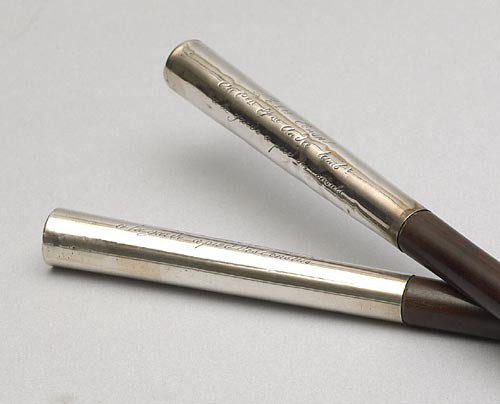The revolutionary suppression of all Ancien Régime orders and decorations was to prove a serious headache for government authorities in need of an acceptable form in which revolutionary distinctions could be awarded. Honorary weapons had previously been used on occasion to symbolise national recognition, but it was General Bonaparte – during his campaigns in Italy and Egypt – who standardised this practice.
On 4 Nivôse An VIII (25 December 1799), a consular decree made official and set about organising the use of honorary arms. Awarded exclusively to individuals in the military, these weapons came in various forms, which would be tailored according to the recipient’s function, and included rifles, muskets, trumpets, axes, and drum sticks. Swords were reserved for officers or soldiers who had distinguished themselves by a particular act of bravery or for services rendered that went beyond those expected.
André Estienne, originally from Cadenet (in the Vaucluse département), volunteered for service in the Bouches-du-Rhône battalion in 1792. The Italian campaign was to be his baptism of fire, and he served with great distinction as a soldier in the 51ème demi-brigade de ligne under General Bonaparte’s direct command. On 16 November 1796, with French troops held up and unsuccessful in their attempts to seize the bridge that would take them over the river Alphone (near Arcole), Estienne, then aged nineteen, leapt into the river and – lifting his drum above his head – urged his comrades to follow him. Once on the other side, he beat out the charge, sowing panic in the enemy ranks; French troops streamed across the river and the Austrian soldiers were routed. On 28 fructidor an X (15 September 1802), just after he had transferred to the chasseurs à pied de la garde des Consuls, Estienne was singled out for praise by Bonaparte, who noted the brave conduct of the one who would become known as the “little drummer of Arcole”, and presented him with an honorary certificate. His drumsticks bear the inscription “Le 1er Consul au Citoyen Etne André tambr à la garde à pieds des Consuls” (“The 1st Consul to Citoyen [Estienne] [André] [drummer] in the garde à pieds des Consuls”).
Estienne was amongst the first to be admitted to the Légion d’honneur and in 1803, he received his cross from the hands of Bonaparte himself. Further glory was to come: he was selected to beat an honorary ruff at the French emperor’s coronation ceremony on 4 December 1804, at Notre Dame in Paris.
An example of military courage, Estienne is symbolic of the loyalty expected of a young soldier towards his general, and of the Nation towards its leader. The “little drummer of Arcole” was to be immortalised in the pediment of the Panthéon, as well as on the Arc de Triomphe. He was also depicted in paintings by Charles Thévenin and Horace Vernet. Estienne, who died in 1837, would later (in 1894) be honoured by his village with the erection of a statue.
Ronan Trucas (tr. H.D.W.)
January 2012


